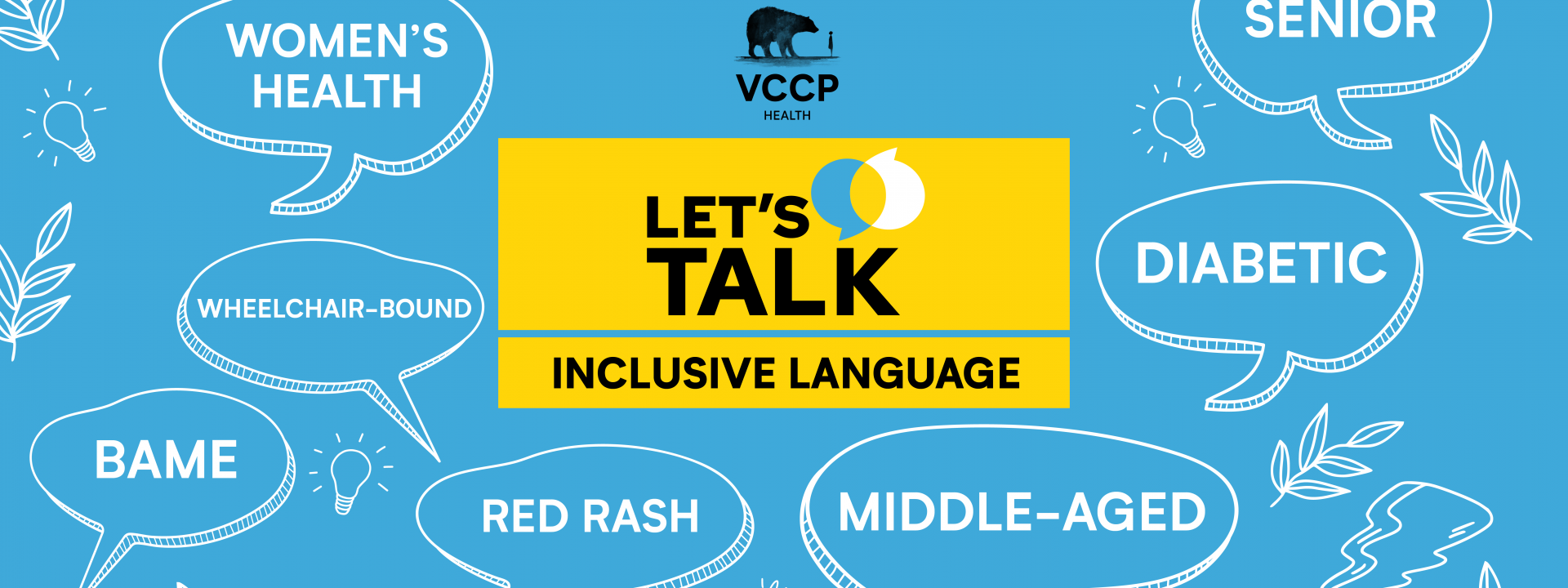Have you found the right words?
Inclusive language in health communications
“Sticks and stones may break my bones but words can never hurt me.” Anyone who has stayed awake at night unable to get a certain phrase out of their head knows this is one of the biggest lies ever to be made into a (kind of) rhyme. Because the words we choose have power. Language is a tool that can educate and empower – or isolate and belittle, even if unknowingly.
It’s especially important to help people feel confident and informed when it comes to their health, making sure your content doesn’t stigmatise or overlook anyone and doesn’t create any negative feelings or confusion.
At VCCP Health, we’ve spent a lot of time recently considering inequalities in healthcare and how we can help to change this, including the responsibility we have to produce content that is representative, relevant and accessible to everyone who needs it.
When talking to a health audience, NHS guidelines can help you sense check your words
The NHS has published guidelines for creating inclusive content. The website provides guidance on language to use when talking about age, disabilities, conditions, ethnicity, religion, nationality, sex, gender, sexuality and skin symptoms. Specific examples and guidance can be found on the NHS website, however there are a few overarching themes against which to sense check your content:
Are you being specific?
As a rule, the more specific you can be the better. For example, instead of labelling patients ‘middle-aged’ say ‘patients in their 40s’. And instead of using ‘BAME’ as a catchall, specify the ethnicities you are referring to or use the term 'ethnic minorities'.
Are you being positive and avoiding labels?
Another guiding rule is to be positive, especially when talking about disability and illness. Don’t frame patients as victims or sufferers, and avoid labelling anyone as their illness or disability. Instead, talk about patients as people living with their condition. It is worth considering if you need the word ‘patient’ or if you can instead talk about ‘people’.
Are you being inclusive of everyone’s experience?
Many health communications have been guilty of focusing too much on one specific group and excluding others. For example, the symptoms of heart attack are well known in men, but may present differently in women. And in the past, the NHS website mostly described skin symptoms as they appear on white skin, though they are now updating content to reflect a variety of skin tones. Beyond skin colour, there are other considerations for describing symptoms in a way that everyone will experience. For someone with sight loss for example, non-visual description of symptoms (such as the texture of a rash) can be invaluable.
Are you being accessible for all reading abilities?
As well as what you say, how you say it is vital. When writing for the general public, this means using language that is suitable for people of all reading abilities. You can check the readability of your writing using a free readability checker, such as this one.
Guidelines like the NHS provide are a great help when writing content for health audiences. However, if possible, the best way to check your content is by running it past someone representing your intended audience who will be familiar with any nuances or specific challenges. By checking our language is inclusive and accessible at every stage, we can ensure content that feels progressive and inclusive, supporting the healthcare needs of everyone.
Would you be able to identify what’s wrong with the sentence: “BAME seniors in the UK are increasingly suffering from diabetes”?
To discuss the answers to this and talk about any projects you may have, get in touch with beverleyn@vccp.com

